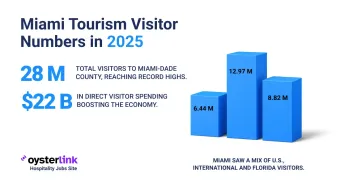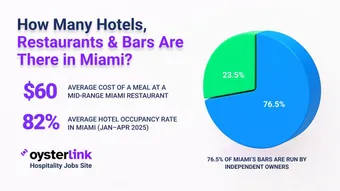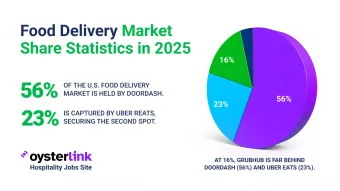Alaska Cost of Living: Quick Takeaways
- Housing Costs: Average rent for a one-bedroom apartment in Alaska rose to about $1,600 in 2025.
- Transportation Expenses: Public transit monthly passes cost roughly $75, and fuel prices average $3.97 per gallon.
- Groceries and Food: Monthly grocery costs per person are high at around $1,424, with dining out at casual places costing about $15 per meal.
- Utilities and Healthcare: Monthly utilities total about $194, while employer-sponsored health insurance averages near $160 monthly.
- Income Levels: The median household income for 2025 is approximately $76,000.
Alaska’s unique geographic and climatic conditions significantly impact its cost of living. Residents experience some of the highest expenses in the US for groceries and utilities.
This article delivers a full breakdown of major living costs in Alaska for 2025, helping you understand expenses like housing, transportation, healthcare and more.
1. Housing Costs in Alaska
Housing expenses represent a significant portion of Alaska's living costs. Rent prices have shown a consistent upward trajectory, making affordability a challenge for many.
- 2010: Average rent for a one-bedroom apartment was around $900.
- 2015: Increased to about $1,050.
- 2020: Rose to approximately $1,200.
- 2024: Jumped to $1,583.64.
- 2025: Estimated at $1,600.
This steady increase reflects Alaska's housing demand and limited availability in key locations.
For hospitality businesses in Alaska, understanding real estate market trends can be crucial when planning expansions or new locations.
2. Homeownership and Real Estate Trends in Alaska
Buying property in Alaska has become more expensive over the years as the real estate market experiences growth:
- 2010: Median home price was roughly $200,000.
- 2015: Increased to around $250,000.
- 2020: Approximately $300,000.
- 2024: Reached $372,939.
- 2025: Projected at $380,000.
This trend underscores the rising value and demand for owned homes in Alaska.
3. Transportation Expenses in Alaska
Transportation costs in Alaska encompass public transit, fuel, and vehicle maintenance.
- Public Transit: One-way fare is about $2, with monthly passes around $75.
- Fuel: Average price per gallon is $3.97 as of 2025.
- Vehicle Maintenance: Annual expenses average $1,200.
These figures can vary depending on distance traveled and frequency of vehicle use.
4. Utility Costs in Alaska
Utility bills in Alaska tend to be higher than many other states due to climate conditions affecting energy needs for heating and electricity.
- Electricity: Monthly costs average $134.11.
- Internet: Around $60 each month.
- Total Utilities: Combined monthly average is approximately $194.11.
Costs depend on usage patterns and provider rates.
5. Grocery and Food Expenses in Alaska
Groceries are notably expensive in Alaska, reflecting transportation and import costs. Dining out options also carry premium pricing.
Monthly grocery expenses per person stand at about $1,424. Casual dining typically costs $15 per meal, while meals at mid-range restaurants average $50.
Businesses that rely on food service staffing might be interested in our restaurant staffing hiring strategies to optimize their teams despite high operational costs.
6. Healthcare Costs in Alaska
Healthcare expenses include insurance premiums and out-of-pocket payments. Employer plans and marketplace options have different costs:
- Employer-Sponsored Health Insurance: Average monthly cost is about $160.42.
- Silver Plan Marketplace Premium: Monthly premiums are approximately $650.
Healthcare costs here tend to be higher than the national average given Alaska's unique logistical challenges.
7. Educational Expenses in Alaska
Education is accessible through several options:
- Public Schools: Tuition-free as funded by local taxes.
- Private Schools: Average tuition is around $10,000 annually.
- In-State University Tuition: Approximately $7,000 per year.
Costs vary based on the institution and program chosen.
8. Entertainment and Leisure in Alaska
Leisure activities and entertainment in Alaska include standard costs for many forms:
- Movie Tickets: Cost around $12 each.
- Gym Memberships: Average $50 per month.
- Mid-Range Restaurant Meals: Approximately $50 per meal.
- Annual Entertainment Expenses: Roughly $2,000.
- Personal Care Services: Around $800 annually.
- Miscellaneous Goods and Services: About $1,000 per year.
9. Taxes and Miscellaneous Fees in Alaska
Alaska's tax environment includes:
- State Income Tax: None; Alaska has a 0% income tax rate.
- Sales Tax: Varies from 0% to 7.5% depending on the local jurisdiction.
- Property Tax Rate: Averaging about 1.04% of assessed value.
These taxes affect both residents and businesses differently depending on location and income.
10. Childcare and Family Expenses in Alaska
Families in Alaska face notable costs for childcare and related activities:
- Daycare Services: Average monthly fees are about $1,017.50.
- After-School Programs: Around $300 per month.
- Extracurricular Activities: Approximately $100 monthly.
These costs play a significant part in family budgets.
11. Clothing and Personal Care in Alaska
Alaskans tend to spend a bit more on clothing and personal care due to weather and limited access to affordable options.
- Clothing: Monthly expenses average roughly $150.
- Personal Care: Around $60 per month for grooming, hygiene products and services.
12. Insurance Costs in Alaska
Insurance costs across various types include:
- Health Insurance: Silver plan monthly premiums near $650.
- Auto Insurance: Average annual cost is about $1,500.
- Homeowners Insurance: Approximately $1,200 annually.
- Renters Insurance: Roughly $200 per year.
Insurance expenses reflect Alaska’s risks and market conditions.
13. Miscellaneous Expenses in Alaska
Residents spend on a variety of other needs, including entertainment and personal services:
- Entertainment: Approximately $2,000 annually.
- Personal Care Services: Around $800 yearly.
- Miscellaneous Goods and Services: About $1,000 per year.
14. Income and Salaries in Alaska
Income growth has helped offset rising costs:
- 2010: Median household income was roughly $60,000.
- 2015: Increased to approximately $65,000.
- 2020: Rose further to $70,000.
- 2023: Reached around $75,000.
- 2025: Estimated at $76,000.
For those working in Alaska hospitality, such as bartenders or servers, understanding restaurant pay and wages is important when negotiating offers and setting budgets.
15. Comparison with National Averages
Alaska’s cost of living is considerably higher than the rest of the US overall, largely due to goods and grocery prices:
- Overall Cost of Living: About 33% above national average.
- Housing: Roughly 28% higher than average.
- Utilities: Around 24% above average.
- Food: 27% more expensive on average.
- Healthcare: 16% higher costs than national figures.
- Transportation: Elevated by 15% compared to averages.
- Goods and Services: A steep 48% higher than the US average.
Our Methodology for Alaska Cost of Living Figures
We compile these cost of living figures using multiple trusted sources such as Numbeo, Bureau of Labor Statistics, MIT Living Wage Calculator, Zillow, Statista and government data. Estimates fill gaps when exact data is lacking to provide a comprehensive overview.
Alaska Cost of Living: Conclusion
Living in Alaska in 2025 involves higher-than-average expenses driven mainly by housing, groceries and utilities. The state’s unique geography and climate contribute substantially to these costs.
While incomes have grown steadily, residents must plan carefully given the premium prices in many categories. For newcomers and locals alike, understanding these costs enables better budgeting and financial decisions for life in the Last Frontier.
Employers in Alaska's hospitality sector may find guidance in hiring a hotel manager effectively to help navigate these challenges.




